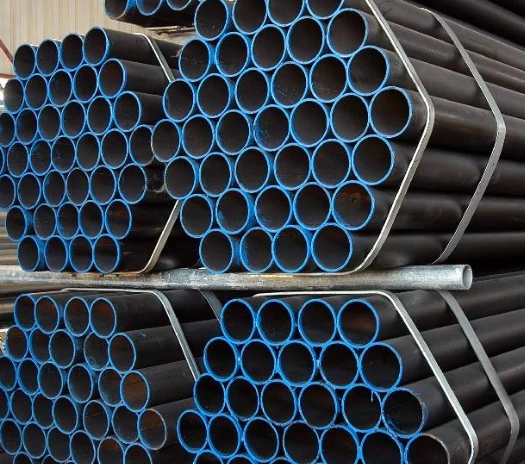-
Cangzhou Yulong Steel Co., Ltd.
-
Phone:
+86 13303177267 -
Email:
admin@ylsteelfittings.com
- English
- Arabic
- Italian
- Spanish
- Portuguese
- German
- kazakh
- Persian
- Greek
- French
- Russian
- Polish
- Thai
- Indonesian
- Vietnamese
- Zulu
- Korean
- Uzbek
- Hindi
- Serbian
- Malay
- Ukrainian
- Gujarati
- Haitian Creole
- hausa
- hawaiian
- Hebrew
- Miao
- Hungarian
- Icelandic
- igbo
- irish
- Japanese
- Javanese
- Kannada
- Khmer
- Rwandese
- Afrikaans
- Albanian
- Amharic
- Armenian
- Azerbaijani
- Basque
- Belarusian
- Bengali
- Bosnian
- Bulgarian
- Catalan
- Cebuano
- China
- China (Taiwan)
- Corsican
- Croatian
- Czech
- Danish
- Esperanto
- Estonian
- Finnish
- Frisian
- Galician
- Georgian
- Kurdish
- Kyrgyz
- Lao
- Latin
- Latvian
- Lithuanian
- Luxembourgish
- Macedonian
- Malgashi
- Malayalam
- Maltese
- Maori
- Marathi
- Mongolian
- Myanmar
- Nepali
- Norwegian
- Norwegian
- Occitan
- Pashto
- Dutch
- Punjabi
- Romanian
- Samoan
- Scottish Gaelic
- Sesotho
- Shona
- Sindhi
- Sinhala
- Slovak
- Slovenian
- Somali
- Sundanese
- Swahili
- Swedish
- Tagalog
- Tajik
- Tamil
- Tatar
- Telugu
- Turkish
- Turkmen
- Urdu
- Uighur
- Welsh
- Bantu
- Yiddish
- Yoruba

Feb . 16, 2025 09:55 Back to list
ANSI B16.5 WELDING NECK FLANGE
Pipe flanges are an essential component in various industries, including oil and gas, petrochemicals, water supply systems, and many more. Their primary function is to connect pipes, valves, pumps, and other equipment to form a piping system. Selecting the right flange is crucial for ensuring the system's efficiency, safety, and longevity.
Trustworthiness in pipe flange selection often hinges on the materials used and the compatibility with the intended application. Innovation in material science has led to the development of flanges made from stainless steel, carbon steel, alloy, and various composites, each offering distinct benefits. For instance, industries dealing with corrosive substances might opt for stainless steel due to its superior corrosion resistance. Trustworthy manufacturers openly share information regarding material grades and their suitability for different environments, providing peace of mind that the chosen flange will perform as expected under specific conditions. In addition to material and type, dimensions and pressure ratings are crucial factors in flange selection. Flanges are manufactured to fit pipes of various sizes, and each comes with a pressure rating, denoting the maximum pressure it can handle. Selecting a flange that matches the system's pressure requirements prevents leaks and system failures. This aspect emphasizes why expert consultation is beneficial; seasoned professionals can provide insights into choosing not only the most suitable flange but also ensuring it enhances the system’s overall integrity. Finally, recent advancements have led to the introduction of custom-designed flanges to accommodate unique applications. These bespoke solutions demonstrate a blend of engineering prowess and innovative material use, reflecting the evolution of the industry to meet specific client needs more efficiently. Customization comes with its own set of challenges and benefits, but it allows systems to operate more cohesively, often leading to cost savings in the long run due to increased efficiency and reduced maintenance. In summary, the selection of a pipe flange is not merely about connecting components but about ensuring the continuous and safe operation of critical systems. The right balance of experience, expertise, authority, and trust is crucial. For engineers and purchasing managers, understanding these facets can lead to informed decisions that optimize performance and uphold safety standards in demanding industrial environments.


Trustworthiness in pipe flange selection often hinges on the materials used and the compatibility with the intended application. Innovation in material science has led to the development of flanges made from stainless steel, carbon steel, alloy, and various composites, each offering distinct benefits. For instance, industries dealing with corrosive substances might opt for stainless steel due to its superior corrosion resistance. Trustworthy manufacturers openly share information regarding material grades and their suitability for different environments, providing peace of mind that the chosen flange will perform as expected under specific conditions. In addition to material and type, dimensions and pressure ratings are crucial factors in flange selection. Flanges are manufactured to fit pipes of various sizes, and each comes with a pressure rating, denoting the maximum pressure it can handle. Selecting a flange that matches the system's pressure requirements prevents leaks and system failures. This aspect emphasizes why expert consultation is beneficial; seasoned professionals can provide insights into choosing not only the most suitable flange but also ensuring it enhances the system’s overall integrity. Finally, recent advancements have led to the introduction of custom-designed flanges to accommodate unique applications. These bespoke solutions demonstrate a blend of engineering prowess and innovative material use, reflecting the evolution of the industry to meet specific client needs more efficiently. Customization comes with its own set of challenges and benefits, but it allows systems to operate more cohesively, often leading to cost savings in the long run due to increased efficiency and reduced maintenance. In summary, the selection of a pipe flange is not merely about connecting components but about ensuring the continuous and safe operation of critical systems. The right balance of experience, expertise, authority, and trust is crucial. For engineers and purchasing managers, understanding these facets can lead to informed decisions that optimize performance and uphold safety standards in demanding industrial environments.
Latest news
-
ANSI 150P SS304 SO FLANGE
NewsFeb.14,2025
-
ASTM A333GR6 STEEL PIPE
NewsJan.20,2025
-
ANSI B16.5 WELDING NECK FLANGE
NewsJan.15,2026
-
ANSI B16.5 SLIP-ON FLANGE
NewsApr.19,2024
-
SABS 1123 FLANGE
NewsJan.15,2025
-
DIN86044 PLATE FLANGE
NewsApr.19,2024
-
DIN2527 BLIND FLANGE
NewsApr.12,2024
-
JIS B2311 Butt-Welding Fittings LR/SR 45°/90° /180°Seamless/Weld
NewsApr.23,2024











